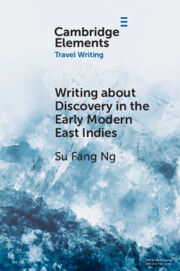Element contents
Writing about Discovery in the Early Modern East Indies
Published online by Cambridge University Press: 21 November 2022
Summary
- Type
- Element
- Information
- Series: Elements in Travel WritingOnline ISBN: 9781009047029Publisher: Cambridge University PressPrint publication: 15 December 2022



